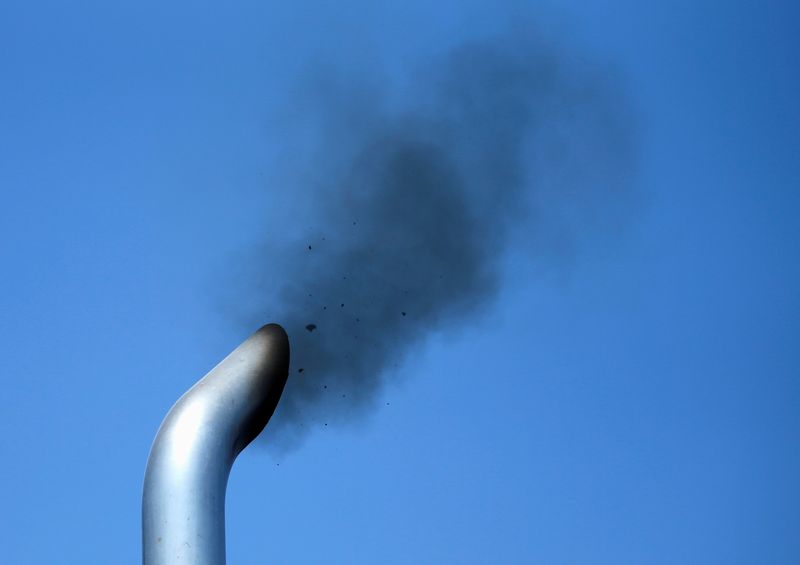By David Shepardson
WASHINGTON (Reuters) -U.S. President Joe Biden on Wednesday vetoed a measure approved by Congress that would overturn his administration's sharp new limits on emissions from heavy-duty trucks responsible for significant soot and smog.
The veto preserves Environmental Protection Agency (EPA) rules will "make our air cleaner and prevent thousands of premature deaths by limiting hazardous heavy-duty vehicle pollution," Biden said on Twitter.
The EPA standards tighten yearly emissions limits, the first update to clean air standards for heavy duty trucks in more than two decades. They are 80% more stringent than current standards.
The heavy vehicles include delivery trucks, motor homes, refuse haulers, transit, shuttle and school buses and tractor-trailers.
Republicans opposed the EPA rules, finalized in December, saying they are too challenging to implement, will increase supply chain costs and will make trucks too expensive for small business owners.
The EPA estimates by 2045, the rule will result in up to 2,900 fewer premature deaths annually, 1.1 million fewer lost school days for children and $29 billion in annual net benefits.
"It's really important, especially for protecting the health of the 72 million people living near truck freight routes in America," EPA Administrator Michael Regan told Reuters in December.
Under the Congressional Review Act, a simple majority vote in both chambers of Congress can reverse recently finalized rules, but that action must be approved by the president.

In April, the EPA in April proposed a new round of pollution cuts for larger vehicles. It estimates that electric vehicles (EVs) could comprise 50% of buses, garbage trucks and similar vehicles by 2032, along with 35% of new short-haul freight tractors and 25% of new long-haul freight tractors. Medium-duty vehicle rules are projected to cut emissions by 44% by 2032 over 2026 standards.
The EPA also proposed in April cutting light duty passenger car and truck emissions by 56% over 2026 levels. EPA estimates would result in 60% of new vehicles by 2030 being electric and 67% by 2032. That proposal has drawn concerns from major automakers and Republicans.
